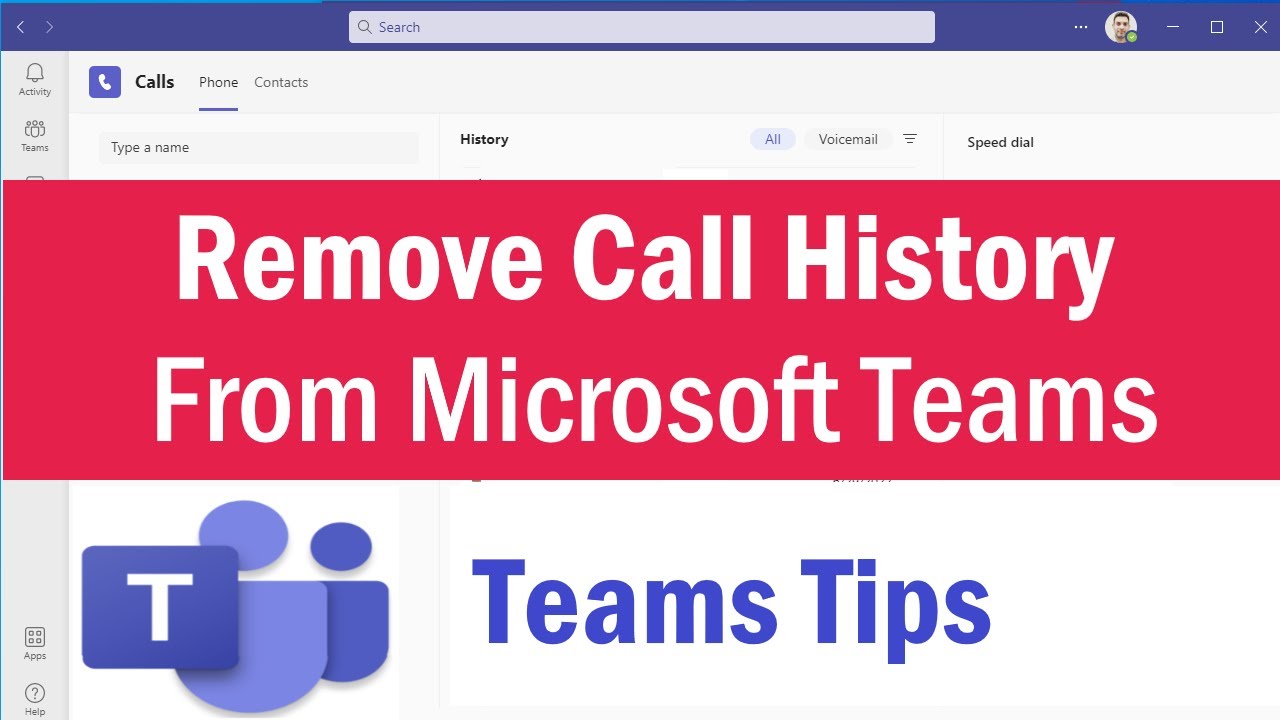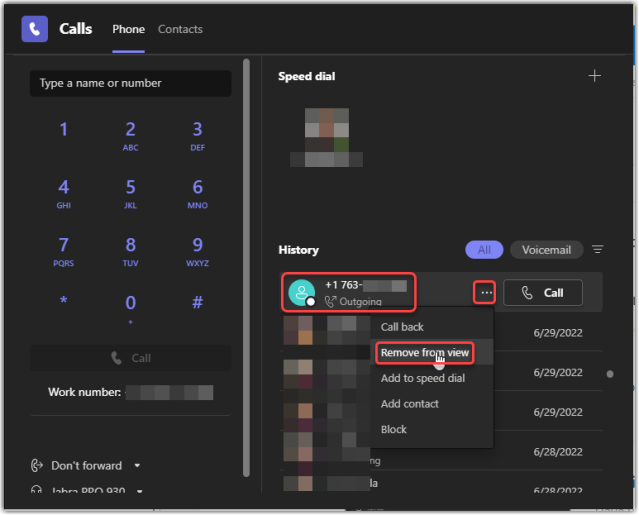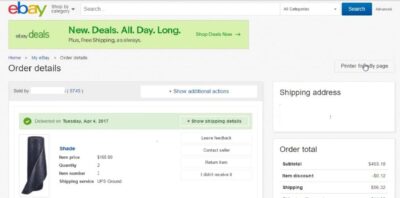Microsoft Teams is a powerful collaboration platform that facilitates seamless communication among team members. One crucial aspect of this communication is the call history feature, which keeps a record of your incoming and outgoing calls. Understanding how call history works on Microsoft Teams is vital for efficient call management and overall user experience.
When you make or receive calls on Microsoft Teams, the platform automatically logs these interactions in the call history section. This includes voice and video calls, providing a comprehensive overview of your recent communication activities. Accessing your call history is easy – you can find it within the Teams application on your desktop or mobile device.
Key Components of Call History:
- Incoming Calls: Shows details of calls you've received, including the caller's name or number, date, and time.
- Outgoing Calls: Displays information about calls you've made, specifying the recipient, date, and duration.
- Missed Calls: Highlights any calls that you didn't answer, indicating the caller's information and when the call occurred.
Call history is not only a record-keeping tool but also serves practical purposes for users. It allows for quick redialing of recent contacts, provides insights into communication patterns, and helps in keeping track of missed calls that may require follow-up.
Customizing Call History Preferences:
Microsoft Teams provides users with the flexibility to customize their call history preferences. You can choose to show or hide calls based on different categories, enabling a personalized view of your communication log. This customization is particularly useful for users who want to focus on specific types of calls or filter out certain activities for a cleaner interface.
Syncing Across Devices:
Another noteworthy feature of Microsoft Teams' call history is its seamless synchronization across devices. Whether you're using Teams on your computer, tablet, or mobile phone, your call history remains consistent. This ensures that you can access your complete call log regardless of the device you're using, promoting a unified communication experience.
As we delve into the details of call history on Microsoft Teams, the next sections of this guide will provide step-by-step instructions on how to manage and optimize your call history, including deleting specific entries or clearing the entire log for a fresh start.
Steps to Delete Call History

Managing your call history on Microsoft Teams involves periodic cleanup to maintain a tidy interface and protect your privacy. Follow these step-by-step instructions to delete specific entries or clear your entire call history on the phone version of Microsoft Teams:
- Open Microsoft Teams: Launch the Teams application on your phone and ensure that you are logged in to your account.
- Access Call History: Navigate to the "Calls" tab to view your call history. Here, you will see a list of your recent calls categorized as incoming, outgoing, and missed calls.
- Select Entry to Delete: Identify the specific call entry you want to delete. Tap and hold on the entry to reveal options for that call.
- Delete Individual Entry: From the options menu, select "Delete." Confirm the action if prompted. This will remove the selected call entry from your history.
- Clear Entire Call History: If you wish to clear your entire call history, locate the option to "Clear All" or "Clear Call History" within the Teams app. Confirm the action to erase all entries.
Note: Deleting individual entries is useful for maintaining specific call records, while clearing the entire call history provides a clean slate for a fresh start. Choose the option that aligns with your preferences and needs.
Customizing Deletion Settings:
Microsoft Teams also allows users to customize deletion settings based on their preferences. Check the Teams settings for options related to call history cleanup. Some configurations may include automatic deletion after a certain period or the ability to manually manage storage space occupied by call history.
| Step | Action |
|---|---|
| 1 | Open Microsoft Teams |
| 2 | Access Call History |
| 3 | Select Entry to Delete |
| 4 | Delete Individual Entry |
| 5 | Clear Entire Call History |
By following these steps, you can efficiently manage and control your call history on Microsoft Teams, ensuring a well-organized and clutter-free communication experience on your phone.
Also Read This: Project Precision: Creating a Construction Schedule in Microsoft Project
Benefits of Regular Call Cleanup
Maintaining a clean call history on Microsoft Teams through regular cleanup offers several advantages for users, enhancing their overall communication experience. Let's explore the key benefits of keeping your call history organized:
- Improved Efficiency: Regular call cleanup ensures that you can quickly locate and access relevant call entries. This enhances efficiency, especially in a professional setting where quick reference to recent calls is essential.
- Enhanced Privacy: Deleting sensitive or private call entries from your history protects your privacy. This is crucial for maintaining confidentiality, whether in business dealings or personal communications.
- Optimized Storage: Over time, a cluttered call history can occupy valuable storage space on your device. Regular cleanup helps optimize storage, ensuring that your device operates smoothly without unnecessary data burden.
- Clear Communication Patterns: Analyzing your call history becomes more meaningful when it reflects current and relevant data. Regular cleanup allows for a clearer representation of your communication patterns, helping you identify trends and preferences.
- Reduced Distractions: Uncluttered call history minimizes distractions, allowing you to focus on important calls without unnecessary visual noise. This is particularly beneficial in a professional environment where concentration is paramount.
Customizable User Experience:
Microsoft Teams provides users with the flexibility to customize their call history preferences, including the ability to show or hide specific types of calls. Regular cleanup allows you to tailor your call history to your preferences, creating a personalized and user-friendly experience.
| Benefit | Description |
|---|---|
| Improved Efficiency | Quick access to relevant call entries enhances overall efficiency. |
| Enhanced Privacy | Deleting sensitive calls protects your privacy and confidentiality. |
| Optimized Storage | Regular cleanup helps optimize device storage for smoother operation. |
| Clear Communication Patterns | A clutter-free history provides a clearer representation of communication trends. |
| Reduced Distractions | Uncluttered call history minimizes distractions, promoting focused communication. |
By recognizing and leveraging these benefits, users can make the most out of their Microsoft Teams call history, creating a more streamlined and efficient communication workflow.
Also Read This: Here is How to Deactivate Flickr Account in Less Than a Minute
Common Issues and FAQs
While managing call history on Microsoft Teams is generally straightforward, users may encounter common issues or have questions about the process. Let's address some frequently asked questions and common issues related to call cleanup:
-
-
Q: Can I Recover Deleted Call Entries?
-
A: Unfortunately, Microsoft Teams does not provide a built-in feature to recover deleted call entries. It's crucial to double-check before confirming the deletion to avoid accidental data loss.
-
-
Q: Why Can't I See All My Call History?
-
A: The visibility of call history may be affected by your settings. Ensure that your filters are correctly configured to display the desired types of calls (incoming, outgoing, missed).
-
-
Q: Is Call History Synced Across Devices?
-
A: Yes, Microsoft Teams syncs your call history seamlessly across devices. Ensure that you are logged in with the same account on all your devices to access consistent call logs.
-
-
Q: Can I Clear Call History Automatically?
-
A: Microsoft Teams may offer settings to automatically clear call history after a specified period. Check your application settings for options related to automatic cleanup.
-
-
Q: What Should I Do If I Encounter App Crashes During Cleanup?
-
A: App crashes during cleanup can be due to various reasons. Ensure that your Teams app is updated to the latest version, and consider restarting your device before attempting cleanup again.
Additional Tips:
- Regularly review your call history to identify and address issues promptly.
- Check for updates to the Microsoft Teams app to ensure you have the latest features and bug fixes.
- If you encounter persistent issues, consider reaching out to Microsoft Teams support for assistance.
Also Read This: Trending Keywords on 123RF: Insights into Current Market Demand and Emerging Themes
Best Practices for Call Management
Effective call management on Microsoft Teams involves adopting best practices to optimize your communication experience. Here are key guidelines to enhance your call management workflow:
- Regularly Review Call History: Set aside time to review your call history and identify entries that may need cleanup. This proactive approach ensures a consistently organized call log.
- Use Filters Wisely: Leverage the filtering options in Microsoft Teams to customize your call history view. This allows you to focus on specific types of calls, making it easier to locate relevant entries.
- Employ Automatic Cleanup: Check for settings that enable automatic cleanup of call history after a certain period. This feature helps in maintaining a clutter-free history without manual intervention.
- Prioritize Security: Be mindful of the sensitive nature of call history. Regularly delete entries containing confidential information to enhance privacy and security.
- Train Team Members: If you are part of a team using Microsoft Teams, encourage team members to follow best practices for call management. Consistency across the team ensures a standardized and efficient approach.
- Keep App Updated: Ensure that your Microsoft Teams app is always up to date. Updates often include improvements to features, bug fixes, and enhanced security, contributing to a smoother call management experience.
Customization Tips:
- Explore customization options in Teams settings to tailor your call history preferences.
- Consider color-coding or labeling calls for easy identification.
- Archive important call entries for future reference.
Also Read This: Quick Guide: How to Download Ifunny Videos on Android
Security Considerations
Security is paramount when managing call history on Microsoft Teams. Understanding and implementing key security considerations ensures the confidentiality and privacy of your communication data. Let's delve into the crucial security aspects related to call history management:
- Confidential Information: Be cautious about storing calls with sensitive or confidential information in your call history. Regularly review and delete entries that may pose a security risk.
- Access Control: Ensure that only authorized individuals have access to your Microsoft Teams account. Implement strong password policies and enable multi-factor authentication to add an extra layer of security.
- Device Security: Secure the devices you use to access Microsoft Teams. Keep your operating system, Teams app, and security software up to date to protect against potential vulnerabilities.
- Encrypted Communication: Microsoft Teams employs encryption to secure your calls and data in transit. Be mindful of the encryption status and avoid using unsecured networks for sensitive conversations.
- Regular Audits: Conduct regular audits of your call history to identify any unusual activities or potential security breaches. Investigate and take corrective actions promptly.
Additional Security Measures:
- Consider using dedicated devices for Microsoft Teams calls, especially in professional settings.
- Educate team members about the importance of security when managing call history.
- Report any suspicious activities or security concerns to the Microsoft Teams support team.
Also Read This: Product Manager Path: Becoming a Product Manager at Microsoft
Conclusion
Cleaning up your call history on Microsoft Teams for phones is a simple yet powerful practice that contributes to a more efficient and secure communication experience. In this guide, we've covered various aspects of call history management, from understanding its components to providing step-by-step instructions for deletion.
Regularly reviewing and deleting call entries not only helps in organizing your communication log but also offers several benefits, including improved efficiency, enhanced privacy, and optimized storage. By following best practices and considering security measures, users can tailor their call history to align with their preferences and security requirements.
Addressing common issues and frequently asked questions provides users with valuable insights into potential challenges they might face during call cleanup. The inclusion of a quick reference table in each section facilitates easy navigation and serves as a handy guide for users seeking specific information.
In conclusion, effective call management on Microsoft Teams is not just about cleaning up your call history but also about adopting a proactive and security-conscious approach. By incorporating the outlined best practices and being mindful of security considerations, users can make the most out of their Microsoft Teams experience, ensuring a streamlined and protected communication workflow.
Remember, a well-maintained call history contributes to a clutter-free environment, allowing users to focus on meaningful conversations and interactions. Embrace these practices, stay updated with the latest features, and enjoy a seamless communication journey on Microsoft Teams for phones.
Additional Resources
Explore further with these additional resources to enhance your knowledge and proficiency in managing call history on Microsoft Teams:
- Microsoft Teams Documentation: Refer to the official Microsoft Teams documentation for in-depth guides, tutorials, and the latest updates on call history management. Stay informed about new features and functionalities.
- Video Tutorials: Visual learners can benefit from video tutorials available on platforms like YouTube. Watch step-by-step demonstrations and tips on efficiently managing call history on Microsoft Teams.
- Community Forums: Engage with the Microsoft Teams community on forums and discussion boards. Share your experiences, ask questions, and learn from the insights and solutions provided by other users.
- Training Courses: Enroll in Microsoft Teams training courses offered by reputable online platforms. These courses cover various aspects of Microsoft Teams, including call management, and provide interactive learning experiences.
- Webinars and Events: Attend webinars and virtual events organized by Microsoft or other industry experts. Stay updated on the latest trends, best practices, and advanced techniques for effective call history management.
By tapping into these additional resources, users can continuously enhance their skills and stay informed about the evolving landscape of Microsoft Teams. Whether you're a beginner or an advanced user, these sources offer valuable insights and support for optimizing your call history management on the platform.














